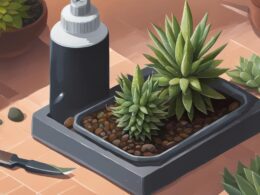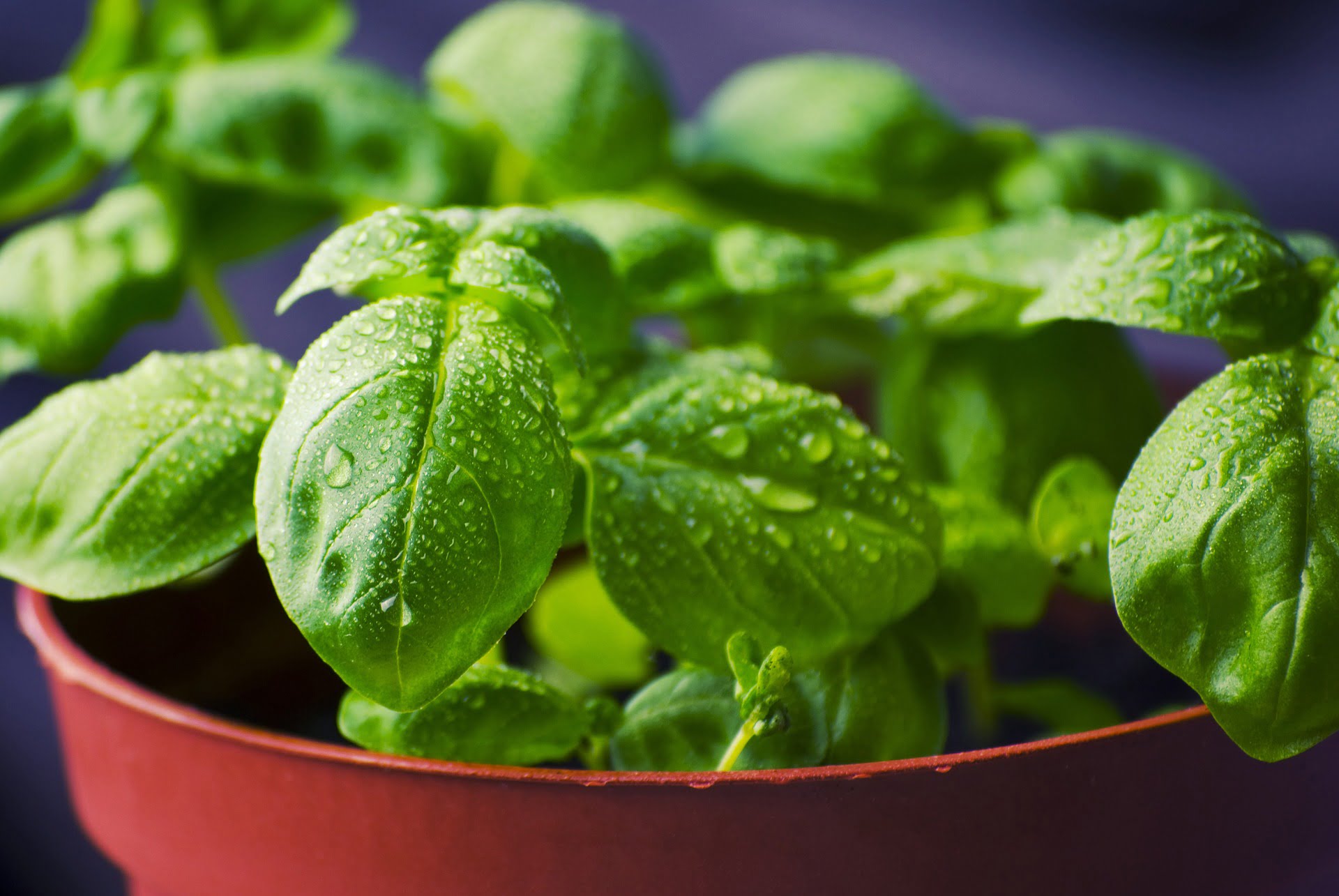Are you thinking about adding some vibrant color to your home or garden with potted hibiscus? Before you do, it’s important to understand how long these beautiful plants can last and how to properly care for them.
Potted hibiscus can bring joy and beauty to your space for several years if you provide them with the right conditions and give them the care they need. In this article, we will explore the lifespan of potted hibiscus and provide you with tips on how to extend their bloom period.
We will also discuss how to recognize signs of stress or disease and how to overwinter potted hibiscus. Additionally, we will guide you on transplanting and repotting, ensuring the safety of both you and your plants.
With the right knowledge and care, you can enjoy the vibrant blooms of potted hibiscus for years to come.
Quick Summary
- Potted hibiscus can live for 5-10 years with proper care.
- Factors such as soil quality, sunlight, and watering affect the lifespan of potted hibiscus.
- Well-draining soil and 6 hours of direct sunlight are essential for the longevity of hibiscus plants.
- Regular watering, proper sunlight, and good air circulation are important for the care and maintenance of potted hibiscus.
Understanding the Lifespan of Potted Hibiscus
Potted hibiscus, with proper care and attention, can bring vibrant beauty to your home for years to come. Understanding the lifespan of potted hibiscus is essential to ensure their longevity. Various factors can affect the lifespan of these plants, and by being aware of them, you can take necessary precautions to extend their life.
The lifespan of potted hibiscus can vary, but on average, they can live for five to ten years. However, with the right conditions and care, some hibiscus plants have been known to live even longer. Factors that can influence their lifespan include the quality of the soil, the amount of sunlight they receive, and the regularity of watering.
To ensure the longevity of your potted hibiscus, it’s crucial to use well-draining soil that allows excess water to escape. Additionally, placing them in an area where they can receive at least six hours of direct sunlight each day is essential. Regular watering is also essential, but be cautious not to overwater, as this can lead to root rot.
By paying attention to these factors and providing the necessary care, you can enjoy the beauty of your potted hibiscus for many years. Remember to monitor their health regularly and address any issues promptly to ensure a long and vibrant life for your hibiscus plants.
Proper Care and Maintenance
To ensure your hibiscus thrives, give it regular watering and plenty of sunlight. Proper care and maintenance are crucial for the longevity of your potted hibiscus. Here are some tips to help you prevent root rot and choose the right pot size.
Root rot can be a major issue for potted hibiscus, as it can cause the roots to decay and eventually lead to the death of the plant. To prevent root rot, it is essential to choose the right pot size. A pot that is too large can hold excess water, leading to waterlogged soil and root rot. On the other hand, a pot that is too small can restrict root growth and cause the plant to become root-bound.
To determine the appropriate pot size, consider the size of your hibiscus. A general rule of thumb is to choose a pot that is 1-2 inches larger in diameter than the current root ball. This will allow room for root growth without excess water retention. Additionally, make sure the pot has drainage holes to allow excess water to escape.
Incorporating these tips into your care routine will help prolong the lifespan of your potted hibiscus. By preventing root rot and choosing the right pot size, you can ensure that your hibiscus stays healthy and vibrant for years to come.
Recognizing Signs of Stress or Disease
Recognizing the signs of stress or disease in your hibiscus is crucial for maintaining its health and ensuring its longevity. To keep your potted hibiscus thriving, it’s important to be vigilant and proactive in identifying common pests and preventing root rot. Here are a few key points to help you in this process:
-
Identifying Common Pests: Regularly inspect your hibiscus for signs of pests such as aphids, whiteflies, or spider mites. Look for tiny insects, sticky residue on leaves, or curled and discolored foliage. If you notice any of these signs, take immediate action to eliminate the pests. You can use organic insecticidal soap or neem oil to control them effectively.
-
Preventing Root Rot: Overwatering is the main culprit behind root rot in hibiscus plants. Ensure your potted hibiscus has proper drainage by using a well-draining potting mix and a pot with drainage holes. Water the plant thoroughly but allow the top inch of soil to dry out before watering again. Avoid leaving the plant in standing water, as it can lead to root rot.
-
Regularly Inspect Leaves: Examine your hibiscus leaves regularly for any signs of discoloration, spots, or wilting. These could be indicators of stress or disease. Remove any affected leaves promptly to prevent the spread of infection.
-
Maintain Good Air Circulation: Proper air circulation around your hibiscus plant helps prevent fungal diseases. Avoid overcrowding your plants and ensure they have enough space to breathe. Prune any overcrowded branches or leaves to allow for better airflow.
By being attentive to these signs and taking the necessary precautions, you can ensure the health and longevity of your potted hibiscus.
Extending the Bloom Period
To prolong the vibrant display of blooms on your hibiscus, you’ll want to implement some simple strategies that will keep your plant flowering for an extended period.
One important factor to consider is the watering frequency. Hibiscus plants require regular watering, especially during hot and dry weather. It’s crucial to keep the soil consistently moist but not overly saturated. A good rule of thumb is to water your hibiscus deeply once or twice a week, allowing the top inch of soil to dry out between waterings. This will ensure that the roots receive enough moisture without becoming waterlogged, which can lead to root rot and other problems.
Another key element in extending the bloom period is fertilizer application. Hibiscus plants are heavy feeders and require regular fertilization to promote healthy growth and continuous blooming. Choose a balanced fertilizer with equal amounts of nitrogen, phosphorus, and potassium, and apply it according to the instructions on the package. Generally, it’s recommended to fertilize your hibiscus every two to four weeks during the growing season.
By following these simple steps and providing your hibiscus with the right amount of water and nutrients, you can help extend its bloom period and enjoy its beautiful flowers for a longer time. Remember to always check the moisture level of the soil and adjust your watering schedule accordingly. Additionally, be cautious not to over-fertilize, as this can lead to nutrient burn and damage the plant. With proper care, your potted hibiscus can continue to bloom and thrive.
What is the Lifespan of a Potted Dracaena?
The potted dracaena lifespan can vary depending on various factors. With proper care and maintenance, these indoor plants can live up to 10 years or more. Regular watering, adequate sunlight, and appropriate fertilization contribute to their longevity. However, neglecting their needs can significantly shorten their lifespan.
Overwintering Potted Hibiscus
Successfully overwintering your potted hibiscus will ensure that its vibrant beauty can be enjoyed year after year. As the temperatures start to drop, it’s important to take the necessary steps to protect your hibiscus from frost and cold weather.
Here are some overwintering techniques that will help keep your potted hibiscus safe during the winter months.
First, you should bring your hibiscus indoors before the first frost. Choose a location that’s cool but not freezing, such as a basement or garage. Make sure the area is well-lit and has good air circulation.
Next, prune your hibiscus to remove any dead or diseased branches. This will help promote new growth in the spring.
It’s also important to reduce watering during the winter months. Overwatering can lead to root rot, so only water your hibiscus when the top inch of soil feels dry.
To protect your hibiscus from frost, you can cover it with a blanket or tarp during cold nights. This will help trap heat and prevent frost damage.
By following these overwintering techniques and protecting your potted hibiscus from frost, you can ensure that it’ll continue to thrive and bring beauty to your garden for years to come.
Transplanting and Repotting
When transplanting and repotting your hibiscus, you’ll want to carefully choose a new container that’s slightly larger than the current one to allow for future growth. Here are four important things to keep in mind:
-
Choosing the right pot: Opt for a pot made of durable material, such as plastic or ceramic, that has drainage holes at the bottom. This’ll prevent water from pooling and causing root rot.
-
Proper soil: Use a well-draining potting mix that’s rich in organic matter. This’ll ensure that excess water can easily escape, reducing the risk of overwatering.
-
Transplanting method: Gently remove the hibiscus from its current pot, being cautious not to damage the roots. Place it in the new container and fill in the gaps with fresh potting mix, lightly pressing it down.
-
Watering frequency: After transplanting, water the hibiscus thoroughly to help settle the soil. Then, water it regularly, keeping the soil consistently moist but not soggy. Check the moisture level by sticking your finger about an inch into the soil – if it feels dry, it’s time to water.
By following these guidelines, you can ensure a successful transplanting and repotting process for your hibiscus, promoting its health and longevity.
Frequently Asked Questions
Can potted hibiscus survive in colder climates?
Yes, potted hibiscus can survive in colder climates if you take proper precautions. To protect them from freezing temperatures, move them indoors or cover them with a frost blanket to prevent frost damage.
What are the common pests that affect potted hibiscus plants?
Common pests affecting potted hibiscus plants include aphids, mealybugs, and spider mites. To prevent them, regularly inspect your plants, remove any affected leaves, and use organic insecticides. Treat infested plants with neem oil or insecticidal soap.
How often should I fertilize my potted hibiscus?
To maintain healthy growth, fertilize your potted hibiscus every 2-4 weeks during the growing season. Use a balanced fertilizer, like a 10-10-10 or 14-14-14, to provide essential nutrients without causing harm to your plant.
Can potted hibiscus be grown indoors?
Yes, potted hibiscus can be grown indoors. To successfully grow hibiscus indoors, provide them with bright, indirect light, regular watering, well-draining soil, and occasional fertilization. Proper care will help them thrive and bloom beautifully.
What is the best time of the year to prune potted hibiscus plants?
The best time to prune your potted hibiscus is in early spring before new growth appears. Use clean, sharp pruning shears to make clean cuts. Be careful not to over prune, as this can harm the plant.
Conclusion
In conclusion, taking care of potted hibiscus plants can ensure their longevity and vibrant blooms. Remember to provide proper care and maintenance, such as watering, fertilizing, and pruning. Look out for any signs of stress or disease and address them promptly. With the right care, you can extend the bloom period and enjoy beautiful flowers for a longer time.
Additionally, don’t forget to overwinter potted hibiscus and consider transplanting or repotting when necessary. Keep these tips in mind and enjoy the beauty of potted hibiscus for years to come.







